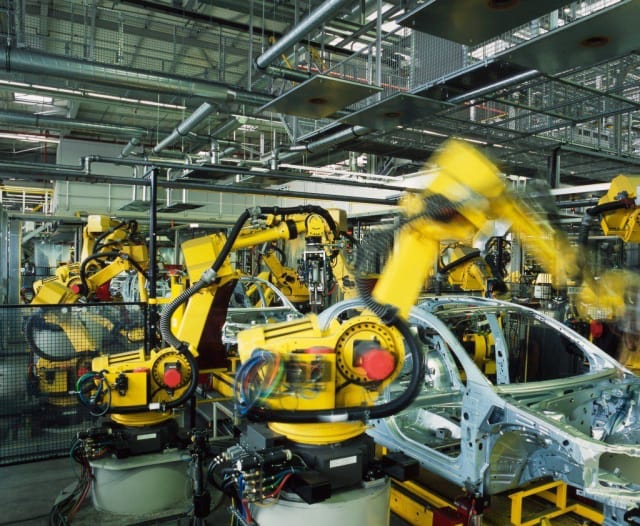Ian Wright posted on November 28, 2017
Well, I thought we were entering the age of additive manufacturing, but it’s the age of optimization that’s next on the docket, at least according to the Global Innovation Summit 2017. The summit was organized by the Global Federation of Competitiveness Councils (GFCC) and the Malaysian Industry-Government Group for High Technology (MIGHT), which has apparently been taking acronymizing lessons from NASA.
“The digital, biotechnological, nanotechnology and cognitive revolutions are colliding and converging to re-write the rules of production, consumption and work in ways we could only imagine a decade ago,” said Deborah Wince-Smith, president of the GFCC and CEO of the U.S. Council on Competitiveness. “These technologies could also answer the grand global challenges of adequate food, clean water, energy, the environment and global health.”
Although the summit itself was fairly broad in scope—touching on everything from agriculture to urban planning—manufacturing clearly plays a key role in what its participants describe as “a technology-driven Age of Optimization.” Wince-Smith’s remarks regarding digitization made this clear:
“We will have the ability to illuminate the operation of every machine and device, the cut of every blade, every movement of material and the consumption of energy minute by minute—providing insight for greater efficiency, waste reduction and lower energy consumption,” she said.
10 Principles for Fostering Sustainability Through Innovation and Competitiveness
Although these principles, formulated by the GFCC, were created with nations, regions and cities in mind, it should be clear that they can also be applied by manufacturers and other private organizations looking for a competitive edge. The essential qualifier here is sustainability, which was the theme of this year’s summit.
So, here are ten principles of competitiveness for a sustainable future:
1. Build Coalitions and Public-Private Partnerships to Drive Future and Sustainable Growth
Public and private sector collaboration is critical for scaling sustainable future production and consumption systems, as well as for developing the future workforce. Technologies, standards, regulations, investments, policies and initiatives need to be coordinated through consultation, cooperation and joint investment mechanisms.
Establishing buy-in on opportunities, challenges and common goals from government, academia, business and civil society will be critical for creating a common sustainable future.
2. Make Innovation the Centerpiece of Sustainable Growth Strategies
Innovation is a fundamental driver for sustainable production systems and a key factor for creating new businesses. To drive sustainable future growth, we need to combine STEM, business and creative capabilities; favorable regulatory regimes; advanced infrastructures; capital availability and smart finance with effective business connectors and knowledge brokers.
3. Invest in Developing Future Skills and Transitioning the Workforce to a New Economic Paradigm
The transition to future production systems will require a massive adaptation in the workforce, powered by STEM and social sciences. New skills will be needed; new jobs will emerge that do not exist today; many jobs will disappear. Government, academia, businesses and civil society will need to come together to effectively develop a future workforce that respects local cultures and values.
4. Enhance Local Capabilities and Leverage Local Assets to Build Global Competitiveness
The emergence of future sustainable production-consumption systems will primarily take place in cities and their surrounding regions. It will be essential to mobilize local actors in government, business, academia, non-profit, international organizations and financial institutions and leverage local innovation capabilities to create new sustainable technologies, businesses, jobs and production systems.
5. Implement Functional, Fast and Forward-Looking IP Regimes
New technology solutions and business models will make future production systems possible. They will emerge and deploy in places where innovators and businesses are sure they will receive rewards for their efforts. Speed is critical for IP regimes as technology and global competition continue to accelerate.

6. Bridge Technology Development and Sustainable Business Models with Infrastructure Development
Sustainable, resilient and secure physical and cyber infrastructures will be essential to address global challenges in areas such as water, energy, climate, mobility, food, housing and natural resources. Countries, regions and cities should tap into the potential of infrastructure investment as a key accelerator for sustainable technologies, businesses and production systems.
7. Scale Sustainable Technologies and Business Models via Global Markets
Future competitiveness will result from local innovation combined with global perspective and scale. Global flows of goods, capital, information and ideas will be essential for future production systems. Stakeholders should support open and transparent markets as drivers for economic growth around the world.
8. Create Sustainable Value Chains and Decouple Resource Pressures from Economic Growth
Emerging technologies open up enormous opportunities to increase the efficiency and productivity of energy and other natural resources—from minerals to water. To maximize this potential, these technologies should be combined with smart regulation and systemic business, production and urban networks concepts. This mix can help decouple economic growth from natural resources depletion, while combating biodiversity loss, desertification and land degradation.
9. Implement Regulations that Create Favorable Conditions for New Business Models and Sustainable Technologies
Efficiency, transparency and predictability are key attributes for functional and innovative business environments. A fast-paced global scenario also requires flexibility, adaptation and accelerated learning. The emergence of future production and consumption systems will require experimentation and institutional learning.
10. Turbocharge Sustainable Development Through Global Benchmarking
To compete and cooperate in building sustainable production and consumption systems, we need to track key metrics and constantly assess new solutions and practices that can be implemented globally. Learning and adapting will only be possible with systematic global engagement and benchmarking.
Want to know more about the future of manufacturing competitiveness?
Follow the link to find out why now is a great time to be in manufacturing.
